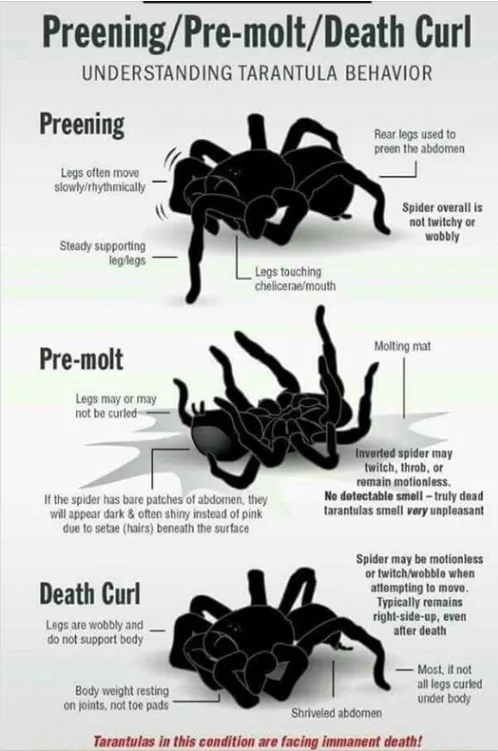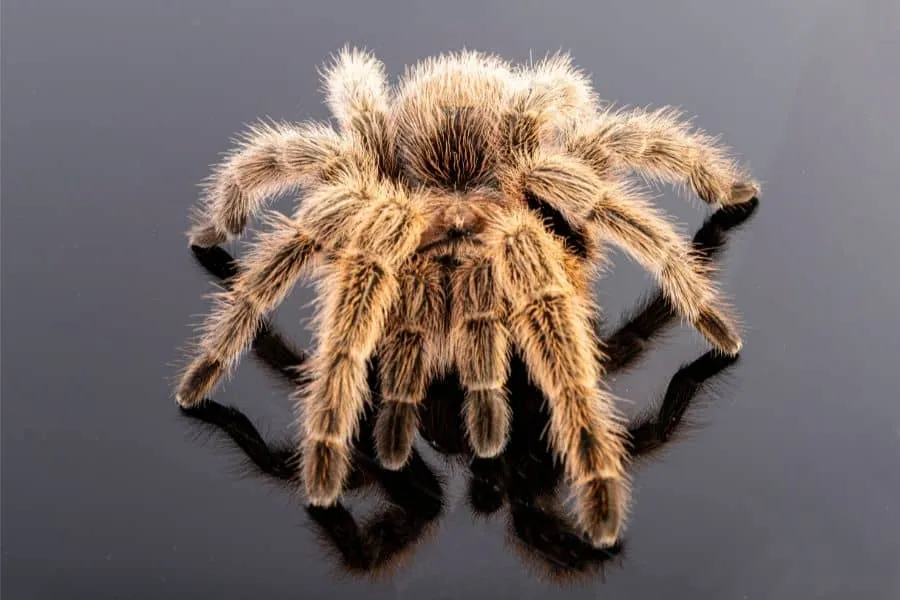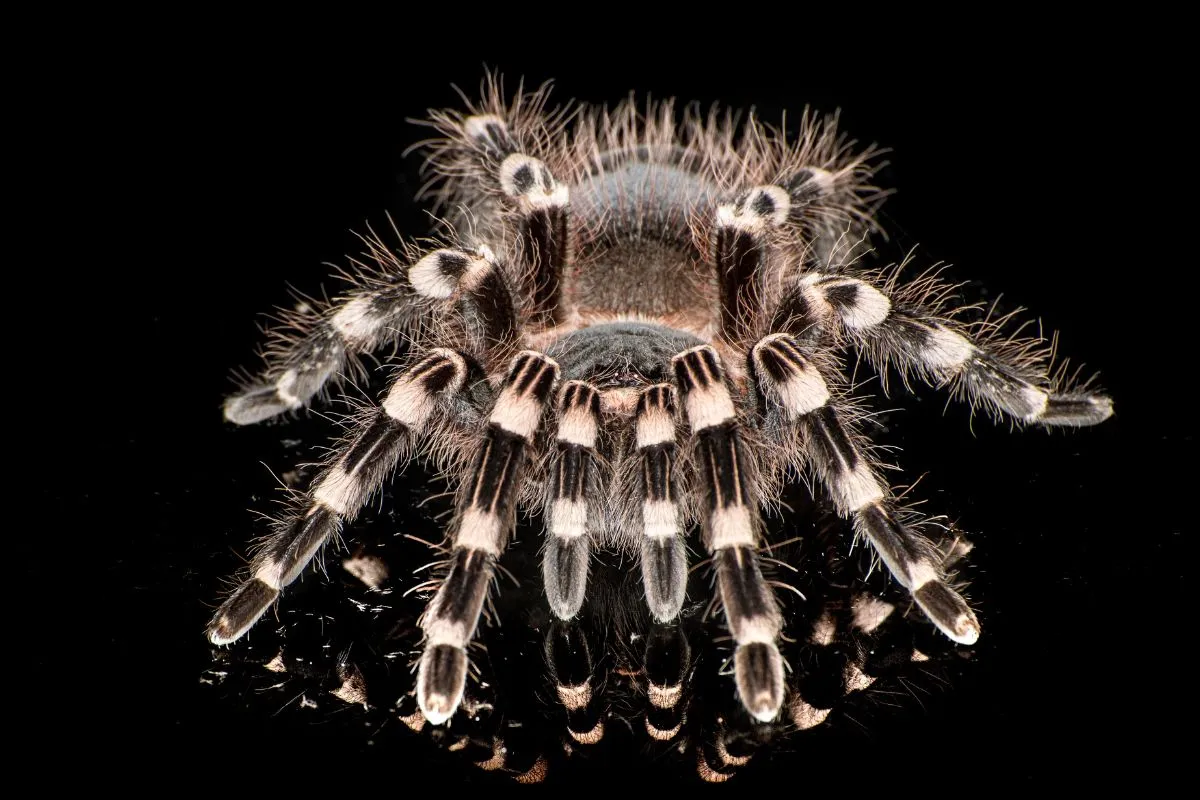What is the Tarantula Happy Dance?
The term “happy dance” when referring to tarantulas, is more of an informal term to describe a range of behaviors observed in these fascinating creatures. Unlike a dog wagging its tail, a tarantula’s expressions are much more subtle and rooted in instinctual responses. It is crucial to understand that tarantulas don’t experience emotions in the same way humans or even other mammals do. Instead, their actions are largely dictated by their biological needs and environmental cues. Therefore, the “dance” isn’t about joy, but rather a combination of actions communicating various needs or reacting to specific stimuli within their environment. This can encompass everything from seeking a mate to feeling threatened, or even simply getting ready to shed their exoskeleton.
Understanding the Tarantula’s Behavior
Tarantula behavior is complex, determined by a variety of elements including species, age, sex, and environmental factors. Different species exhibit different behaviors, some being more docile while others are more defensive. Age plays a significant role because young tarantulas may be more skittish than adults. Males and females often display distinct behaviors, particularly during mating season. The environment where a tarantula lives, including temperature, humidity, and the availability of food and shelter, heavily influences their behavior. Understanding all these aspects is crucial when interpreting the tarantula’s movements and determining whether it’s engaging in what might be interpreted as a “happy dance”. By observing these factors, you can gain a deeper insight into your tarantula’s actions.
Why Tarantulas Dance

The actions interpreted as a “dance” in tarantulas serve several purposes that are vital to the survival of these creatures. These behaviors are primarily ways of communicating or reacting to environmental factors. The “dance” can include things like a courtship ritual to attract a mate, a defensive posture to ward off predators, or certain movements indicating the tarantula is preparing to molt. These actions are not about pleasure or happiness; instead, they are instinctive responses essential for the tarantula’s well-being and the continuation of its species. Recognizing these various purposes helps in understanding the full meaning of the tarantula’s movements and properly caring for them.
Fact 1 Tarantulas and their Environment
The environment plays a critical role in shaping the actions of tarantulas. The habitat directly influences its activity level and behaviors. Factors like temperature and humidity must be appropriate to mimic its natural environment. A tarantula that feels safe and comfortable in its habitat is likely to exhibit more natural behaviors. For example, a tarantula feeling threatened might show a different set of movements compared to one that is relaxed. Providing the right environment is essential for the tarantula’s health and proper function. The tarantula’s dance and all other movements are highly influenced by the surrounding conditions.
Fact 2 Dance Moves and Signals
Tarantulas communicate through body language that can be interpreted as a “dance”. These signals include specific movements, like raising their front legs, flicking their spinnerets, or displaying their fangs. Some actions are related to threats, such as the threat posture, where the tarantula raises its front legs and displays its fangs in an attempt to look bigger and ward off a potential predator. Other movements may be associated with mating, where males display specific behaviors to attract females. Understanding these signals will help interpret the tarantula’s behavior, as it uses a variety of methods to communicate its current state and intentions.
Fact 3 Mating Ritual

The mating ritual in tarantulas showcases a complex set of behaviors, which could be considered a dance. The male tarantula often begins by tapping on the female’s web or by vibrating its body to signal its presence. The male then approaches the female cautiously, sometimes with specific leg movements. This dance is crucial because the female is larger and can be aggressive. The male will then try to insert his pedipalps to deliver sperm. If the dance goes well, the female will permit the male to mate, but if the dance fails, or the male’s actions are deemed incorrect, the female might attack and eat him. Successfully completing the mating dance is therefore crucial for the continuation of the species.
Fact 4 Defensive Behavior
When threatened, tarantulas show a range of defensive behaviors that can be seen as a defensive dance. The common actions include rearing up, showing fangs, and stridulating to make a hissing sound. The goal is to intimidate the predator. Some tarantulas also have urticating hairs on their abdomen, which they flick off as a defense mechanism. These behaviors, or defensive dance, are the way a tarantula can try to survive threats within its surroundings. These are not dances of joy but rather reactions to stress, designed to protect them from harm. The type of defensive reaction depends on the tarantula’s species and its perception of the danger.
Fact 5 Molting Process
Molting is a critical process where tarantulas shed their exoskeleton to grow. Before molting, the tarantula becomes less active and may display some specific behaviors. They might stop eating, spin a mat of webbing, and flip onto their backs. During molting, the tarantula is extremely vulnerable, so they will find a safe spot and remain still. After the molt, the tarantula’s new exoskeleton is soft, and it will typically remain in hiding until the exoskeleton hardens. These actions are essential for the growth and survival of the tarantula, and although it’s not a dance in the traditional sense, it’s a crucial phase marked by specific behaviors.
How to Interpret the Dance

To understand your tarantula’s “dance”, observe its movements and combine those actions with its environment. Look for clues, such as whether it is eating, preparing to molt, or showing signs of mating behavior. Review all these behaviors and you will see whether the tarantula feels comfortable in its current environment. The behaviors serve various functions, from communication to self-preservation. By carefully watching and understanding these signals, you can interpret the purpose of each movement, giving you a greater insight into the tarantula’s actions.
Observing Your Tarantula
Observing your tarantula helps you become aware of its natural behaviors. Note the time of day when the tarantula is most active and what it does during different parts of the day. Make sure the enclosure is safe and clean, and that the temperature and humidity are right for the species. Note any changes in behavior, such as changes in eating habits, unusual movements, or shifts in activity levels. Understanding the usual behaviors will make it easier to spot abnormalities. Your observations contribute to a more insightful and enriching experience, deepening your understanding of your tarantula.
Creating a Happy Habitat
Creating a habitat that meets the tarantula’s needs is essential for the tarantula’s well-being. Start by researching the specific requirements of your tarantula species, including temperature, humidity, and substrate. Make sure the enclosure is the right size, providing enough space for the tarantula to move and feel safe. Include appropriate hiding spots, such as cork bark or artificial plants. Maintaining the habitat involves regular cleaning, providing fresh water, and feeding a proper diet. A well-maintained habitat creates a healthy and enriching environment, which contributes to the spider’s physical and psychological health.
